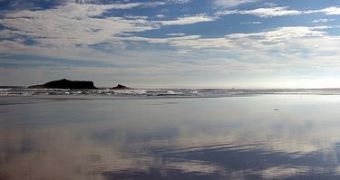Weather stations monitoring will be replaced by data from NASA satellite and ground-based observations, hoping that it will permit states to control pollution and ameliorate water quality. Researchers integrated two NASA products into a computer software in BASINS (Better Assessment Science Integrating Nonpoint Sources), in order to calculate the degree of pollution and streamflow rates.
The research led by Joseph Nigro of Science Systems and Applications, Inc., concluded that both NASA products increased the performance of the water quality model, but neither was significantly better. These systems managed to record the effects of water flow during frequent storm periods within the summer months, thanks to a consistently database coverage, unlike weather stations that cannot consider all precipitations in a certain watershed.
The two NASA products used are the NASA-modified North American Land Data Assimilation System (NLDAS) 1/8th degree precipitation and the Stage IV 4-kilometer dataset made by the NOAA River Forecast Center Multisensor Precipitation Estimator. Seven watersheds within the Chesapeake Bay drainage basin were selected for the testing of the NASA products, because of their scattered locations inside the drainage basin, the lack of reservoirs or diversions and the presence of data on water quality. Also, every watershed represented a certain topographic and land use.
The EPA estimates that in the US there are at least 20,000 water bodies that do not meet water quality standards, so the improvement of the current models should help better evaluate pollution and offer solutions for water quality improvement. In the 1972 Clean Water Act states are require to keep track of the total daily load a body of water can carry, before being considered polluted.
The present model is based on data coming from weather stations, which is often imprecise as it misses precipitation events and leads to errors in water quality. Even though some states may also monitor water quality with in-stream measuring and sampling, some lack the resources to assess and protect water bodies with monitoring data alone.
The results of the experiment were published in the July-August 2010 issue of the Journal of Environmental Quality, published by the America Society of Agronomy, the Crop Science Society of America, and the Soil Science Society of America.

 14 DAY TRIAL //
14 DAY TRIAL //